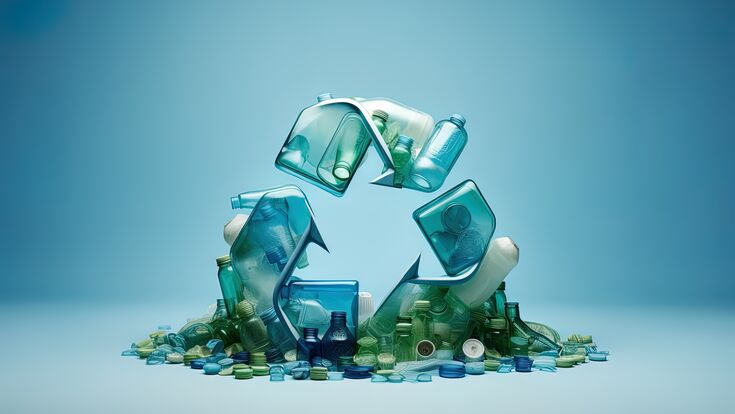Packaging Waste : New study: Are alternatives to plastic packaging automatically more sustainable?

Let's face it: Plastic has a bad reputation. Yes, it does make our modern lives comfortable - possible even. But we did finally realise that we are relying too heavily on this material. Especially when it comes to packaging. According to UNEP, the UN Environmental Programme, about 36 per cent of all plastics produced are used in packaging, including single-use plastic products for food and beverage containers. Approximately 85 per cent of which ends up in landfills or as unregulated waste. The growing sense of environmental responsibility among both consumers and companies has triggered a shift towards alternative materials that are perceived as more sustainable than plastics. This begs the question: Are they really? More sustainable that is.
A new study by the AWARE (Assessment on WAste and REsources) research group of the Politecnico di Milano, Italy, examines the true sustainability of these alternative materials. The research analysed 53 peer-reviewed life cycle assessment (LCA) studies published between 2019 and 2023. The aim was to gain an in-depth understanding of the environmental impact of packaging, focusing on the comparison between plastics and alternative materials.
Related article: Bioplastics and Composting: Not a Love Match
Plastics are not necessarily the least sustainable material
The result might surprise. According to the scientists conventional plastics are not always the least environmentally friendly choice.
Especially bioplastics are emerging as a viable alternative in terms of climate change and fossil resource depletion. They are made from renewable resources and/or are biodegradable. However, other environmental impact categories show some drawbacks, indicating that there is no one-size-fits-all solution.
In addition, the use of glass, although seemingly more sustainable, poses challenges related to its weight, which affects its performance not only in production but also in transport. Although reusing glass is an environmental improvement, it must be done under specific conditions to make reused glass more advantageous than conventional plastics.
In the case of metals such as aluminium, the comparison with plastics is more balanced, particularly in the beverage sector. Nevertheless, even here there are opportunities for improvement, such as focusing on reuse and limiting the transport distances and environmental impacts associated with the reprocessing and washing of packaging.
The life cycle assessment analysis also identified areas for improvement for all the materials studied. Glass and metals could benefit from increased re-use, while bioplastics require optimisation of production processes and end-of-life management.
Related article: How well do Products advertised as compostable decompose?
Considering socio economic implications
However, the scientists also draw attention to another point: According to them a comprehensive assessment of the sustainability of packaging also requires an analysis of its social and economic impacts. Only by examining the totality of the life cycle can we fully understand the implications of each packaging choice, they say.
"Two fundamental aspects emerge from the more than 50 studies analysed", Giovanni Dolci, AWARE group researcher, explains. "First of all, the choice between plastics and alternative materials is highly dependent on the specific application as well as the intrinsic characteristics of the material. At the same time, many studies show methodological criticalities that may influence the results of the comparison, such as analysing only climate change effects without assessing other potential impacts or analysing unrealistic end-of-life packaging management scenarios".
"Plastics prove to be a material with excellent environmental performance, provided it is used correctly; this is due to its light weight, which allows for minimal use of material per package unit and optimising of production processes compared to younger materials such as bioplastics. However, we should not forget the two main criticalities, that is, production from fossil resources and, above all, the high propensity to dispersion of plastics in the environment, where it takes a very long time to degrade; the latter aspect is generally not included in assessments such as those analysed in the research”, Mario Grosso, professor of Waste Management, points out.
So, while scientific research provides valuable information on which materials may be more sustainable, the scientists conclude, it is vital that we carefully consider all aspects of our packaging choices, from production to reuse and recycling, to ensure a more sustainable future for us all.


